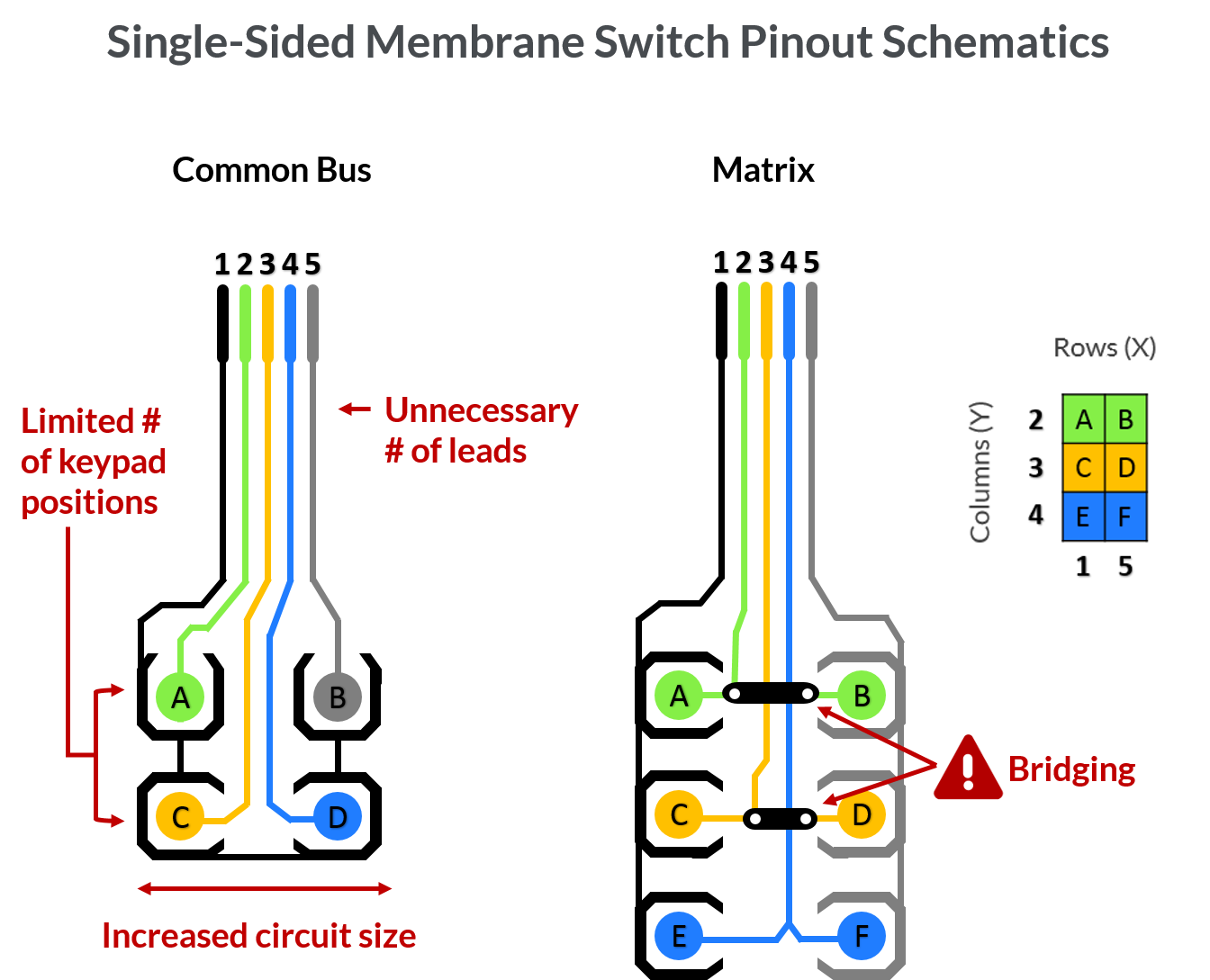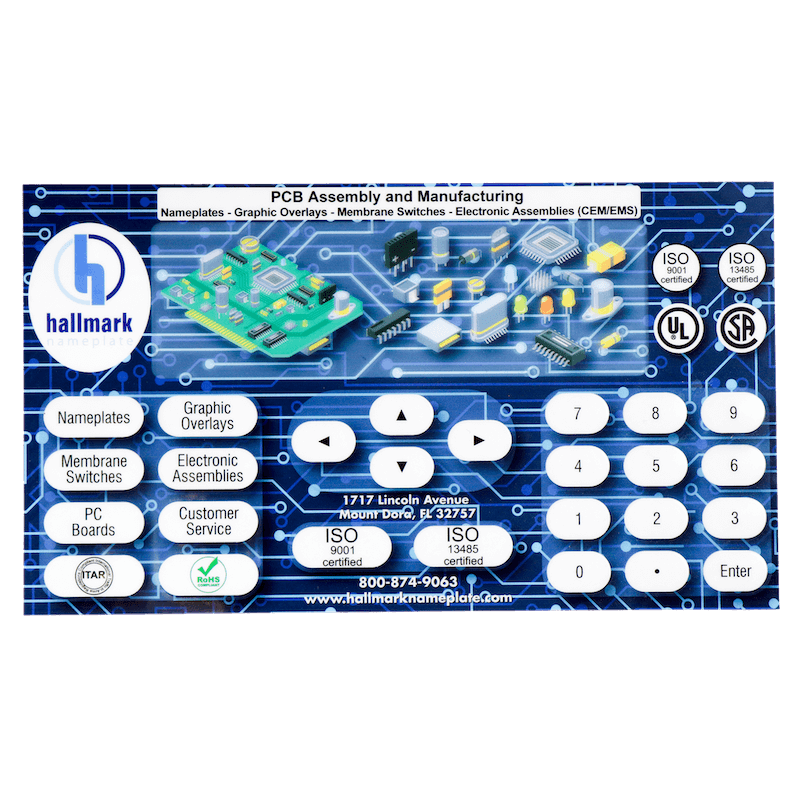Why Membrane Switches Are the Perfect Solution for Industrial Equipment
Why Membrane Switches Are the Perfect Solution for Industrial Equipment
Blog Article
Comprehending the Relevance of Membrane Switches in Interface
Membrane switches are integral elements in the design of efficient user interfaces, promoting not just functionality but likewise boosting aesthetic charm and individual communication. As we check out the future trends and different benefits linked with Membrane technology, it ends up being clear that these switches are much more than simply parts; they represent a convergence of innovation and functionality.
What Are Membrane Switches?

The spacer layer, which includes adhesive properties, enables the separation of the circuit layer from the overlay, ensuring that the button remains in a non-activated state up until pressed. When stress is put on the overlay, it presses the spacer layer, bridging the void and completing the circuit in the underlying layer. This layout not only lowers the physical area needed for standard mechanical switches but also enhances the durability of the device, as Membrane buttons are usually resistant to dirt, wetness, and other ecological variables.
Generally discovered in applications varying from customer electronic devices to clinical devices, Membrane buttons are essential to modern-day technology, offering a effective and easy to use interface that lines up with modern design needs.
Advantages of Membrane Switches
While various button modern technologies exist, Membrane Switches offer distinctive advantages that make them particularly desirable in various applications. One of the key advantages of Membrane switches is their compact style, which enables for space-saving executions in gadgets where property is restricted. Their thin profile not only enhances visual appeal yet also helps with lightweight construction.
An additional considerable advantage is their resistance to ecological factors. Membrane buttons are usually sealed versus wetness, dust, and contaminants, making them perfect for use sought after settings, such as clinical devices and industrial devices. This toughness extends the lifespan of the button, decreasing maintenance expenses and enhancing reliability.
Furthermore, Membrane buttons can be customized to fulfill particular design requirements, incorporating special graphics and shades that boost user interaction. Their tactile feedback choices can also be customized to give a satisfying customer experience. Additionally, Membrane buttons are cost-effective, particularly in high-volume applications, as they can be produced efficiently.
Applications in Various Industries

In the customer electronic devices industry, Membrane switches are prevalent in tools such as microwaves, cleaning makers, and push-button controls. Their tactile responses and aesthetic choices improve individual experience while supplying a smooth, modern-day look. Additionally, automobile makers make use of Membrane buttons in dashboard controls and infotainment systems, where room is restricted, and customer interaction is crucial.
Additionally, the commercial industry leverages Membrane buttons in control panels for machinery and tools, enabling user-friendly operation in frequently extreme environments. Their resistance to chemicals and moisture guarantees durability and dependability in these applications. Overall, the adaptability of Membrane Switches adds considerably to their widespread usage, making them crucial in different technological domain names.
Design Factors To Consider for Membrane Buttons

When developing Membrane switches, a number of crucial considerations should be considered to ensure optimum capability and individual experience. To start with, the choice of materials is important; choosing sturdy, premium substrates can improve the switch's durability and resistance to ecological variables such as wetness and temperature level fluctuations.
Second of all, the design of the graphic overlay must prioritize clearness and ease of use. Symbols and message have to be readable, and the format should help with user-friendly interaction (membrane switches). Furthermore, responsive comments is vital; including a responsive dome or various other devices can improve the user experience by offering physical confirmation of activation
Another important element is the button's electric efficiency. Developers must make sure that the conductive traces are properly created to decrease resistance and prevent signal interference. This includes examining the needed actuation pressure and ensuring compatibility with the digital components they will certainly user interface with.

Future Fads in Membrane Technology
As innovation continues to advance, Membrane switches are poised to advance considerably, driven by technologies in materials and making methods. One emerging trend is the consolidation of advanced products, such as conductive inks and adaptable substrates, which improve longevity and minimize the total weight of Membrane buttons. These products not only enhance the tactile response yet also allow for the style of original site buttons that can withstand harsher environmental conditions.
In addition, the combination of touch-sensitive technologies is transforming conventional Membrane Switches right into even more interactive interface. Capacitive touch sensing units embedded within Membrane switch panels can give an extra responsive and intuitive individual experience, straightening with the growing demand for streamlined, modern-day layouts in customer electronic devices.
In addition, developments in printing techniques, such as digital and 3D printing, allow fast prototyping and personalization of Membrane switches. This versatility permits producers to respond more promptly to market demands and customer preferences.
Last but not least, sustainability is ending up being a considerable focus, with makers discovering environmentally friendly products and processes. As these trends unfold, the future of Membrane innovation assures boosted performance, visual allure, and ecological duty, strengthening their function in innovative interface throughout numerous industries.
Verdict
In conclusion, Membrane Switches represent a vital part in the design of individual interfaces, integrating performance with visual versatility. As developments in innovation continue, the advancement of Membrane switches is expected to more refine individual interfaces, driving advancement and enhancing use in an increasingly complicated technical landscape.
Membrane switches try this web-site are indispensable elements in the design of effective individual interfaces, assisting in not just performance however also enhancing aesthetic allure and customer communication.Membrane Switches offer as an important component in various individual interfaces, assisting in a seamless interaction in between individuals and electronic tools.While countless switch modern technologies exist, Membrane Switches offer distinctive advantages that make them particularly preferable in different applications.In addition, Membrane switches can be personalized to satisfy details design needs, integrating unique graphics and colors that improve user interaction.In verdict, Membrane Switches visit the site stand for a crucial element in the style of customer interfaces, incorporating capability with aesthetic adaptability.
Report this page